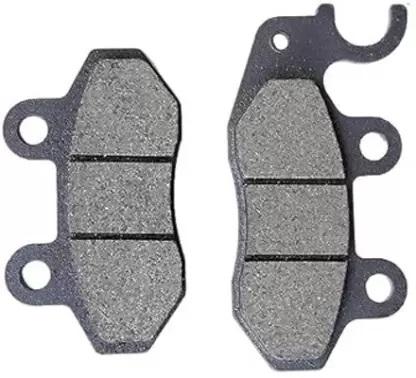The whirr of spokes, the rush of wind, and the rhythmic cadence of pedaling—the joys of biking are boundless. Whether you’re an avid biker or someone who enjoys a leisurely ride, understanding the lifespan of your bike brake pads is crucial for a safe and enjoyable journey. In this blog post, we embark on a journey through the world of bike brake pads, exploring how long they last, the factors affecting their lifespan, and tips to keep your biking adventures rolling smoothly.
Understanding Bike Brake Pads:
Bike brake pads are the unsung heroes of every biking escapade. Positioned against the rim or disc, these small but mighty components are responsible for slowing down and stopping your bike safely. Generally composed of materials such as rubber, composite compounds, or metal, bike brake pads endure constant friction and pressure during rides, making them a critical element of your biking gear.
How Long Do Bike Brake Pads Last?
The longevity of bike brake pads is influenced by a variety of factors, making it challenging to provide a one-size-fits-all answer. On average, bike brake pads can last anywhere from 1,000 to 5,000 miles. However, this estimate can fluctuate based on the type of pads, riding conditions, and maintenance practices.
Factors Influencing Bike Brake Pad Lifespan:
Type of Brake Pads:
The type of brake pads your bike uses significantly impacts their lifespan. Rim brake pads, commonly made of rubber or composite materials, tend to wear out more quickly than disc brake pads, which are often made of more durable materials such as sintered metal or organic compounds.
Riding Conditions:
The environment in which you bike plays a crucial role in brake pad wear. Wet and muddy conditions can accelerate wear and tear as grit and water increase friction. Conversely, dry and clean conditions are gentler on brake pads, extending their lifespan.
Braking Habits:
Your braking habits influence the wear and tear on brake pads. Frequent and abrupt stops, especially when descending steep slopes, generate more heat and friction, leading to quicker pad degradation. Gentle braking and proactive slowing down can significantly extend the life of your brake pads.
Type of Riding:
The type of biking you engage in affects brake pad longevity. Commuters who make frequent stops in city traffic may experience faster wear compared to long-distance bikers cruising on open roads. Similarly, mountain bikers tackling rugged terrains may notice quicker pad deterioration than those riding on smoother surfaces.
Pad Material:
The material composition of the brake pads also contributes to their lifespan. Sintered metal brake pads are known for durability and heat resistance, making them suitable for intense riding conditions. Organic brake pads, on the other hand, may offer a quieter ride but could wear out more quickly.
Tips to Maximize Bike Brake Pad Lifespan:
Regular Inspections:
Routinely inspect your brake pads for signs of wear. Look for thinning pads, uneven wear, or any visible damage. Catching issues early can prevent further damage to your braking system.
Clean Your Bike Regularly:
Keep your bike clean, especially the braking components. Regularly remove dirt, grime, and debris from your brake pads and rims or discs. Clean brakes are more efficient and experience less friction.
Brake Adjustment:
Ensure your brakes are properly adjusted to minimize unnecessary wear. If your brake pads are misaligned or rubbing against the rim or disc when not engaged, they may wear out faster.
Choose the Right Brake Pads:
Select brake pads that are suitable for your riding style and conditions. Consult with your bike shop or manufacturer to identify the best type of brake pads for your specific needs.
Brake in a Controlled Manner:
Practice controlled braking to reduce stress on your brake pads. Gradual, even pressure on the brakes is gentler on the pads than sudden and forceful stops.
Monitor Brake Fluid Levels (For Hydraulic Systems):
If your bike has hydraulic disc brakes, monitor the brake fluid levels regularly. Low fluid levels can affect braking performance and accelerate pad wear.
Read more: Branded Helmet | Motorcycle Riding Gear | Why Arai Helmets Stand Out From Rest
Conclusion:
As biking enthusiasts, we revel in the freedom and joy that pedaling brings. Ensuring the safety and efficiency of our bikes involves understanding and managing the lifespan of essential components like brake pads. By choosing the right type of brake pads, practicing mindful riding habits, and performing regular maintenance, we can extend the life of our bike brake pads and pedal confidently on the open road. Remember, it’s not just about the distance you cover; it’s about enjoying the journey with brakes that are as reliable as your passion for biking.



